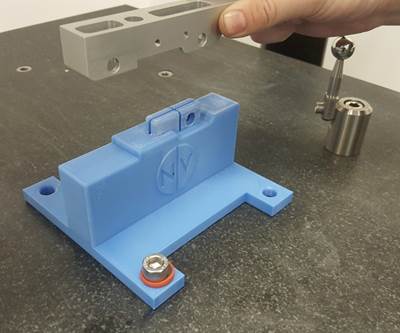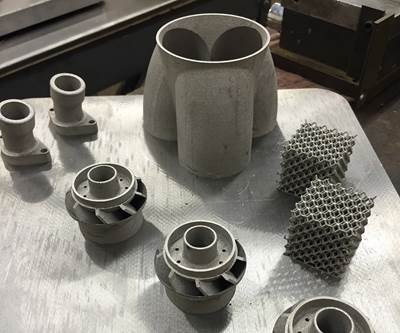3D Printed Fixtures Speed Setup for Inspection
3D printed fixtures enable this company to quickly set up parts for CMM inspection, whether it's a one-off or recurring job.
Share





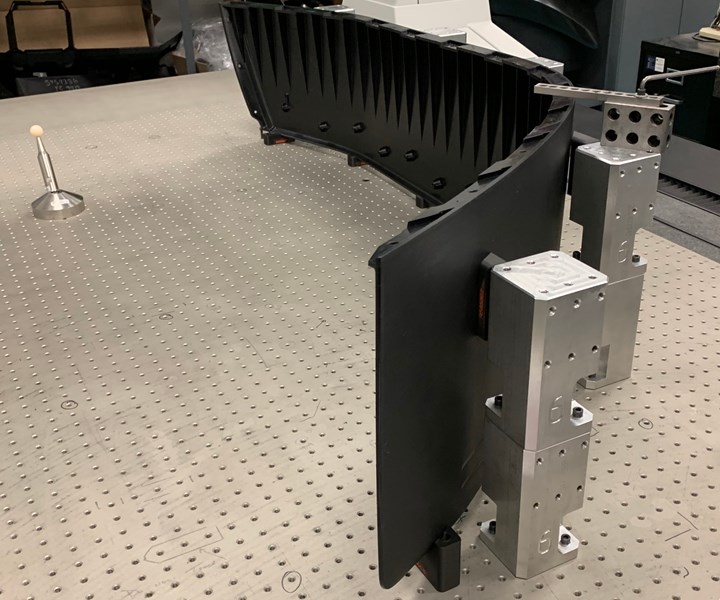
A combination of standard blocks and custom 3D printed fixtures (the black plastic pieces affixed to the table and blocks) enables Evco Plastics to quickly set up parts for inspection.
Evco Plastics, an injection molder based in DeForest, Wisconsin, wasn’t sold on 3D printed tooling from the outset. The company’s first 3D printer — a material jetting model — produced brittle parts that were fine as design prototypes, but prone to break if dropped or handled roughly. Evco later became an early customer for the Markforged Mark One, an extrusion 3D printer with continuous fiber-reinforcement capability. While the fiber placement capability wasn’t always necessary, this printer enabled the company to explore 3D printing strong, functional tooling in plastic.
But it wasn’t until Markforged introduced Onyx, a composite plastic filament reinforced with chopped glass fiber, that 3D printing truly found its stride at Evco. The material has enabled the manufacture of tooling and end-use parts that are both durable and easy to print, without the fuss of fiber reinforcement.
Today, Evco operates a cell of six Mark Two printers at its DeForest headquarters. The largest customer for this printing capacity is its metrology lab, housed in the same building. 3D printed fixtures are used in inspecting everything from very small parts that can be held in a custom nests, to those that require multiple specialized fixtures.
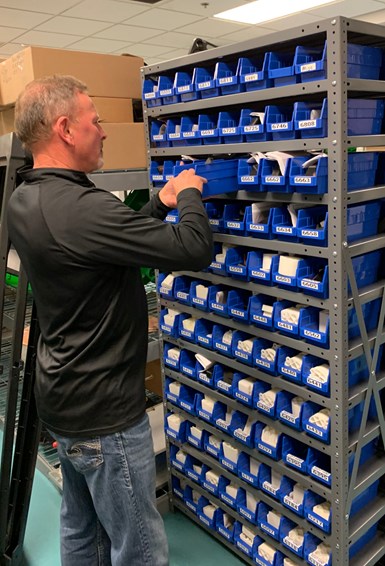
3D printed fixtures are filed by part number with assembly instructions for easy reuse.
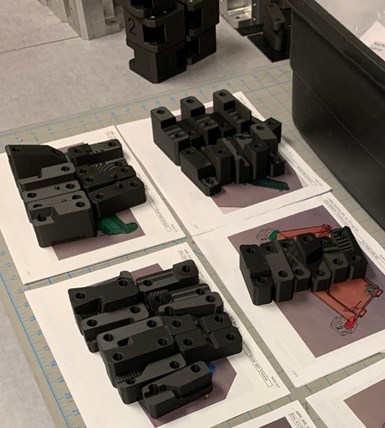
Some custom 3D printed fixtures and their assembly instructions. 3D printed blocks are visible in the background.
For very large pieces like the one shown above, Evco 3D prints custom fixtures that attach to standard blocks. Compared to positioning the piece entirely with off-the-shelf workholding products, this strategy saves considerable time in initial setup. The inspection results also tend to be better. The 3D printed fixtures enable Evco to hold the part in exactly the position it would be in use, rather than whatever orientation is most convenient, leading to more reliable readings.
As an added benefit, recurring jobs can be easily torn down and set up again as needed. Each custom fixture is labeled with a printed-in part and fixture number, and filed with setup instructions to enable reuse.
The company is even at the point of printing fixture blocks shorter than 2 or 3 inches. This isn’t a job one would necessarily think suited to a 3D printer, but for blocks of this height, the company finds this is actually cheaper than having a toolmaker devote time to making these on a machine tool. With the 3D printers it’s possible to stop the build and input threads, for instance, which saves time versus machining a block and tapping holes. It also keeps the printers busy, limiting the amount of time they sit idle.
Evco isn’t stopping here with 3D printing, though. Its latest feat? Automating its 3D printer cell with a cobot to run unattended 24/7. The integration took a fair bit of ingenuity, but is now allowing the company to take on production work 3D printing end-use parts for external customers, in addition to its own tooling needs. Read that story on the Additive Manufacturing website.
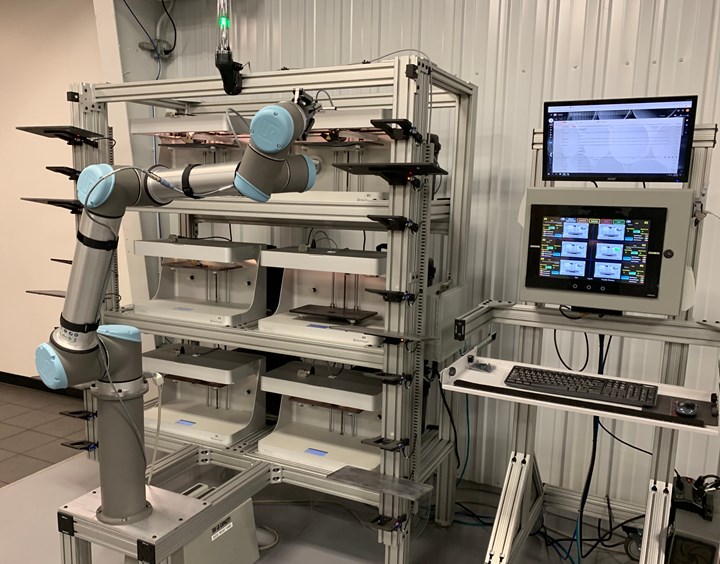
What did it take to achieve automated 3D printing? Composites, cobots, email and more.
Related Content
How to Choose the Correct Fixed-Body Plug Gaging Solution
The two types of fixed-body plug gages are both accurate, fast and easy to use. Consider these factors when selecting one for your gaging application.
Read MoreProcess Control — Leveraging Machine Shop Connectivity in Real Time
Renishaw Central, the company’s new end-to-end process control software, offers a new methodology for producing families of parts through actionable data.
Read MoreBallbar Testing Benefits Low-Volume Manufacturing
Thanks to ballbar testing with a Renishaw QC20-W, the Autodesk Technology Centers now have more confidence in their machine tools.
Read MoreHow to Evaluate Measurement Uncertainty
Manufacturing and measurement are closely coupled. An important consideration for the use of measurement results is the associated measurement uncertainty. This article describes common metrology terms and provides an example uncertainty analysis.
Read MoreRead Next
CMM Inspection Aided by 3D-Printed Fixtures
Cincinnati Inc. has found that 3D-printed fixtures save money and effort in the inspection process for intermediate to complex machined parts.
Read MoreIs Your Shop Ready for 3D Printing?
Andrew Tordanato of Diversified Manufacturing Technologies shares the questions to answer before adding 3D printing capability to your manufacturing operation.
Read MoreThe Case for 3D-Printed Workholding: Collapsing Costs and Lead Times
When Precision Metal Products purchased its first 3D printer last year, the company hoped to collapse both tooling costs and lead times. But the technology’s impact is reaching core business operations, enabling the shop to focus on higher-margin, lower-volume production.
Read More
.jpg;width=70;height=70;mode=crop)


























